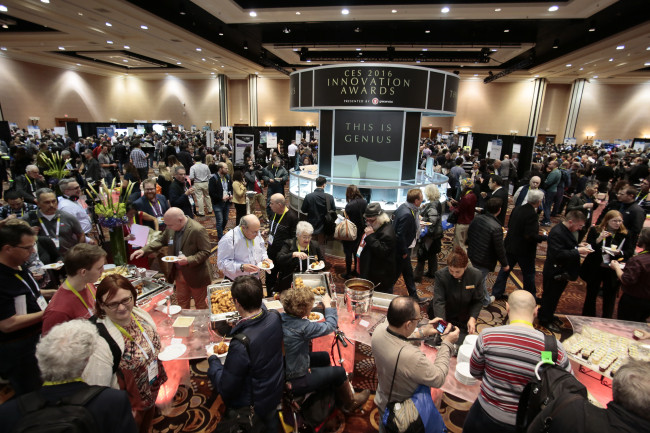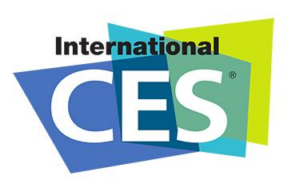The Consumer Electronics Show again managed to grow in 2016, becoming the largest edition of the event ever.
More than 3,800 companies attended as exhibitors, across more than 229,000m² of space. In excess of 170,000 professionals attended the show, of which 50,000 came from outside the USA – including the first Cuban delegation. 6,000 members of the media were present throughout.
The Eureka Park grew again, moving from the Venetian conference halls to the attached, but much larger, Sands exhibition area. 500 startup companies exhibited there, up from 375 at CES 2015. Other technologies that were showcased included UltraHD, HDR, automotive and wearables.
CES 2017 will take place in Las Vegas from the 5th – 8th January.
Highlights
We had a team of five working on this report and another Display Daily team member was also in town for the event. Everybody was dreading the worst when the organisers announced stringent security precautions at all entrances to the show. Fortunately, the checks were quite perfunctory and, as press, we got a “free pass” after a single inspection on the first day. The level of improved security that the process achieved was very, very limited, but fortunately the delays were not bad. (A similar process, but with the technology and thoroughness of an airport check were in evidence at Gitex. However, after the visit of Sheik Mansour, the security was taken away again!)

We looked at everything we thought we should, but, no doubt, still missed something. Just to let you know, in no particular order, here are some of the highlights:
- UltraHD HDR and WCG TVs will be here this year, but it’s going to take another year or two for the dust to settle on standardisation. Almost all the talk was about packaged media (especially Blu-ray, which is hoping for a boost from the new UltraHD version) and over the week I was there, only two interviewees raised the issue of broadcast, which will be a significant part of the scene. There was lots of talk about the Philips/Technicolor tie up.
- LG was intensely pushing OLED – you wouldn’t think that LCD is so important to its TV business if you just looked at the booth. Samsung was pushing LCD with an admission that it is using quantum dots for WCG. Sony showed a very impressive demo display with 4,000 cd/m²
- Lenovo, HP, Dell and Samsung all had notebooks/convertibles using OLEDs from Samsung and Dell had a very expensive 30″ OLED monitor that looked great and also came from Samsung Display
- Samsung showed a video wall to match LG’s 1.4mm version, but LG was showing a 0.9mm version.
- Cima Nanotech had a good demonstration of its high performance materials for large procap displays
- Samsung Display had a much reduced display of flexible displays in its suite, but it also had an 800ppi display for VR.
- Panasonic had a very good looking transparent TV demo concept as well as a switchable transparent/opaque rear projection screen.
- TI showed a new UltraHD projector chip and Imagination had a cool looking ray-tracing demo.
- All of the main consumer electronic categories are likely to be flat or down in revenues, so most of the innovation was in wearables (especially for health and fitness), drones, VR (and AR), the IoT and 3D printing. However, few of these segments will challenge other major categories in the next year or two.
- CES is becoming an automotive show, as IFA is becoming an appliance show. We’ve got a lot more coverage of this area this year.
I mentioned in last week’s editorial (The Interest is in the Details at CES) that the real interest is in the details of what we saw, rather than a big single topic dominating.
I’d welcome any feedback on our report or coverage at [email protected]

